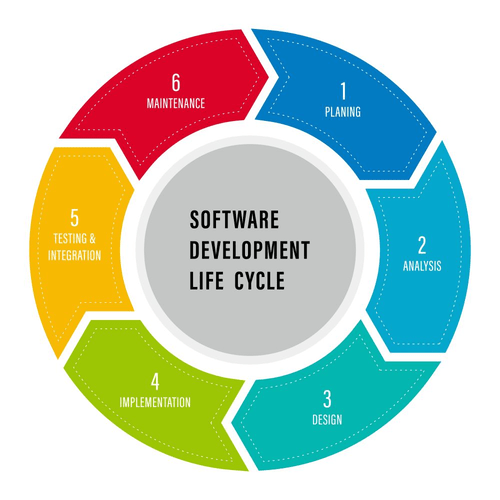Elasticity Vs Scalability In Cloud Computing: Major Differences
It requires strategic planning and funding upfront but eliminates the danger of sudden demand spikes overwhelming your system. However, understand that scalability could result in assets being under-utilized during periods of low demand, which may end in greater costs total. From a strategic standpoint, businesses can leverage both for growth and efficiency. A scalable method helps in planning and preparing for development, while an elastic approach caters to the unpredictable nature of demand, providing flexibility and cost optimization.
Elasticity enhances scalability by providing the mechanism to scale assets up or down routinely primarily based on the changing wants of the system. This dynamic interaction ensures that the system can deal with peak hundreds effectively with out wasting assets throughout off-peak durations. In cloud computing, scalability and elasticity are two necessary concepts that have to be understood to make the most of the capabilities of this know-how successfully. Scalability and elasticity are normally used interchangeably — and wrongfully so.
Auto-scaling in cloud computing refers back to the capability of a system to adjust its assets based on present demand routinely. For instance, this could be accomplished by adding extra CPU or reminiscence to a virtual machine. Vertical scalability is commonly used to accommodate purposes that require more processing power or reminiscence to operate optimally. This permits businesses to scale their functions and companies with out buying and managing physical servers. Successful companies employ scalable business fashions that allow them to grow rapidly and meet changing calls for. You’ve in all probability observed this by now that cloud elasticity and cloud scalability go hand-in-hand.

This strategy permits you to proactively increase your sources to meet increasing demand, making certain your systems can cope with peak loads with out compromising performance. With the growing variety of data being produced, scalability and elasticity play a vital function in managing workloads effectively. However, both concepts have distinct roles and are important in their very own respective ways. Elasticity, however, refers to a system’s capacity to automatically scale up or down assets to satisfy consumer demands. This scalability can happen without guide intervention, meaning a system can broaden or contract sources independently when wanted.
Cloud Scalability Vs Elasticity: What Is The Difference?
Netflix engineers have repeatedly mentioned they take advantage of elastic cloud companies by AWS to serve such numerous server requests inside a quick while and with zero downtime. But should you “leased” a few extra digital machines, you could deal with the visitors for the whole policy renewal duration. Thus, you would have several scalable virtual machines to manage demand in real-time. That is how cloud elasticity is completely different from cloud scalability, in a nutshell. Maintaining a consistent security posture and compliance with regulations can be difficult as assets are dynamically allotted and unallocated.

Cloud elasticity enables businesses to adapt to changing workload calls for, making certain that the availability of cloud providers aligns with current wants. Users can leverage the capabilities of a cloud provider’s infrastructure with out investing in bodily hardware. Digital calls for can surge in a single cloud scalability and elasticity day, making cloud elasticity a vital device for various companies. For an e-commerce platform, cloud elasticity allows fast scaling during high-traffic occasions like Black Friday, ensuring clean customer experiences with out over-provisioning resources.
For example, by spinning up additional VMs in a single server, you create more capacity in that server to deal with dynamic workload surges. Scalable cloud assets be certain that applications and services run smoothly, whilst demand fluctuates. By scaling up resources, businesses can preserve excessive efficiency ranges during peak occasions, ensuring buyer satisfaction and uninterrupted service.
Scalability And Processing Energy
Asynchronous messaging and queues present back-pressure when the entrance finish is scaled without scaling the back end by queuing requests. But on the scale required for even a “smaller” enterprise-level group to take advantage of its cloud system, the costs can add up quickly if you aren’t conscious of them. Because these two terms https://www.globalcloudteam.com/ describe related occurrences, they’re typically used interchangeably. But they are not interchangeable, and as such, shouldn’t be thought of synonymous with one another. What they are is intertwined — because an elastic cloud should simultaneously be scalable up and out.

Elasticity brings significant cost efficiency for companies that experience giant variations in demand, such as seasonal spikes or sudden site visitors surges. Plus, it eliminates the necessity for guide intervention, making useful resource allocation seamless and efficient. However, it does require a strong monitoring and administration system to ensure seamless performance. Elasticity, however, is an ideal fit for businesses with fluctuating or unpredictable demand patterns. It permits your system to routinely modify resources in real-time to meet changing calls for. This dynamic adjustment ensures that you’re only using (and paying for) the assets you want at any given moment.
This would put much more load in your servers in the course of the campaign’s period than at most instances of the year. Say you run a limited-time offer on notebooks to mark your anniversary, Black Friday, or a tech competition. The more successfully you run your consciousness campaign, the extra potential buyers’ interest you’ll find a way to expect to peak. Policyholders wouldn’t notice any adjustments in efficiency whether you served more prospects this year than the previous yr. You could then release some of those digital machines when you no longer need them, similar to during off-peak months, to reduce cloud spend. If you relied on scalability alone, the traffic spike may shortly overwhelm your provisioned virtual machine, causing service outages.
Scalability Vs Elasticity: Which Must You Choose?
By leveraging a number of cloud providers, businesses mitigate vendor lock-in and achieve larger useful resource management flexibility. This, in turn, enhances the scalability and elasticity of their cloud computing techniques, enabling environment friendly useful resource allocation and value optimization. Moreover, utilizing a quantity of cloud providers provides increased redundancy and fault tolerance, guaranteeing excessive availability and minimizing the risk of service disruptions. Such assets include RAM, input/output bandwidth, CPU processing functionality, and storage capacity. Achieving cloud scalability involves a strategic method that combines understanding your workloads, implementing the proper applied sciences, and employing best practices for resource administration.

For instance, you should buy extra online storage for your chatbot system as you receive rising customer inquiries over time. If you need a totally scalable cloud system in your group, you have a formidable task ahead. Cloud adoption and migration require thorough planning, testing, and much more testing in your data storage.
Resources should scale quickly to satisfy the influx of traffic and maintain a high-quality streaming experience. However, if not managed properly, the service could provision additional capacity that is still idle once the demand eases, resulting in pointless costs with out corresponding income. Or Worse, it may not scale up rapidly enough, inflicting viewers to expertise downtime or buffering.
This entails growing or reducing sources, similar to vCPU, reminiscence, and community capability in real-time to match the specified performance level under altering hundreds. Elasticity in the cloud refers to the capability of a system to automatically enhance or decrease computing sources on demand to satisfy workload necessities for a given time. Cloud scalability is a flexible technique that gives quite a few advantages to businesses.
- Scalability and elasticity are the most misunderstood ideas in cloud computing.
- This also supplies fault tolerance, as if one machine fails, the workload may be mechanically redirected to different machines without significantly impacting the general system performance.
- Each new digital machine or storage occasion launched to satisfy demand must be configured to comply with the organization’s safety policies.
- But let’s spell things out plainly and show why your group ought to undertake scalability in cloud computing.
- Cloud scalability is extensively used to meet companies’ dynamic and changing wants.
For instance, an web site that provides additional servers to accommodate increased traffic throughout major gross sales events is employing horizontal scalability. This kind of scalability is best-suited if you expertise increased workloads and add assets to the present infrastructure to enhance server efficiency. If you’re on the lookout for a short-term resolution to your immediate wants, vertical scaling may be your calling. Serverless computing permits businesses to run purposes without managing the underlying infrastructure, enhancing scalability and elasticity. It allows seamless scaling of applications and real-time useful resource allocation, decreasing operational prices and complexity. Cloud scalability is important in growing performance by permitting businesses to add extra sources or servers to satisfy rising calls for.
Cloud Elasticity In Action: Main Use Instances
The versatility is vital for mission primary or enterprise primary functions where any split the difference in the exhibition may prompts huge enterprise misfortune. Thus, flexibility comes into image the place extra belongings are provisioned for such utility to satisfy the presentation stipulations. One key facet of this definition is that it factors out that elasticity relies on the perform of scale. Essentially, the distinction between the two is including extra cloud instances as opposed to making the cases larger. Accelerate and ensure the success of your generative AI initiatives with multi-cloud flexibility, selection, privateness and control. Demandbase used CloudZero to scale back their annual cloud spend by 36%, justifying $175 million in financing.

It’s not just about scaling up and down; it’s about the agility to pivot swiftly in response to real-world demands. This article delves into the mechanics of cloud elasticity, explores the way it influences cloud expenditure, and discusses its benefits and potential challenges, along with real-world functions. Modern load balancers combine with auto-scaling mechanisms, dynamically adjusting the pool of servers they distribute visitors to, according to present demand.

